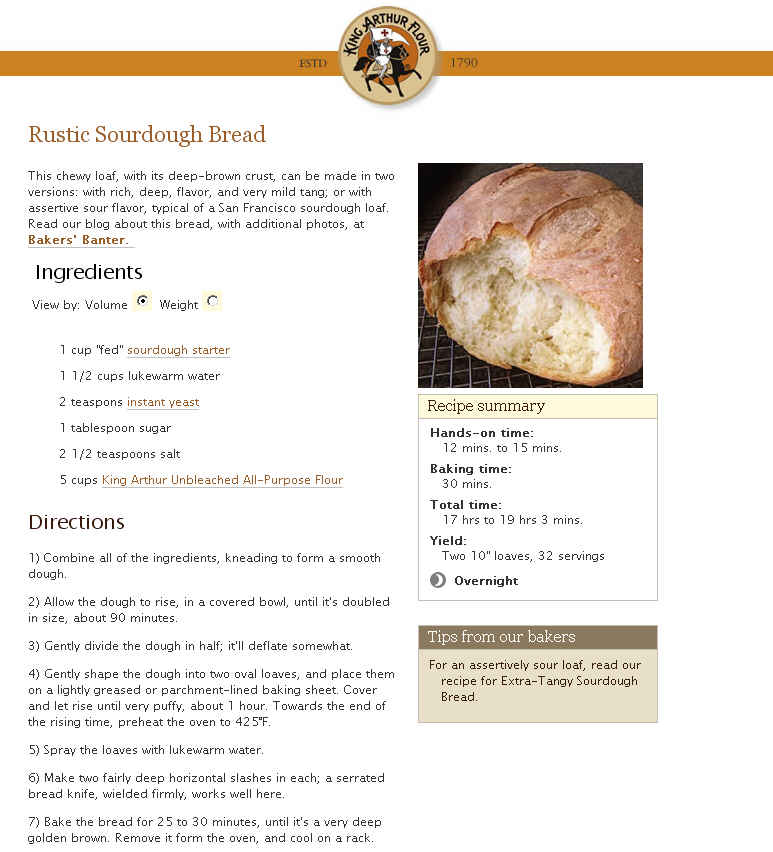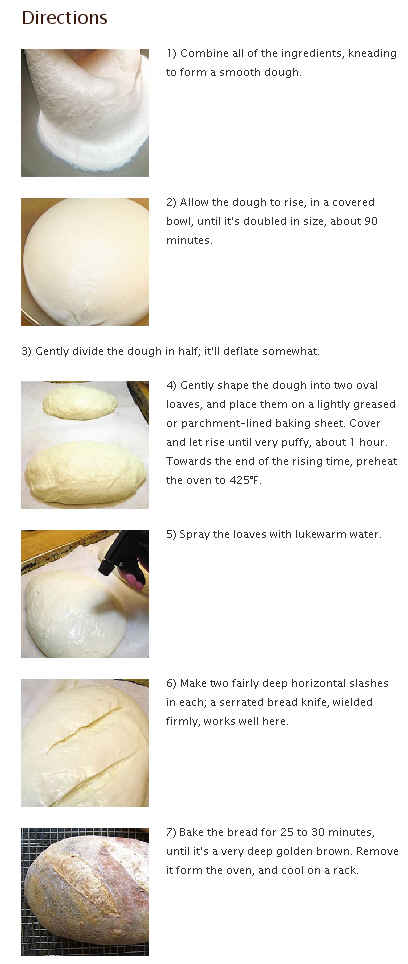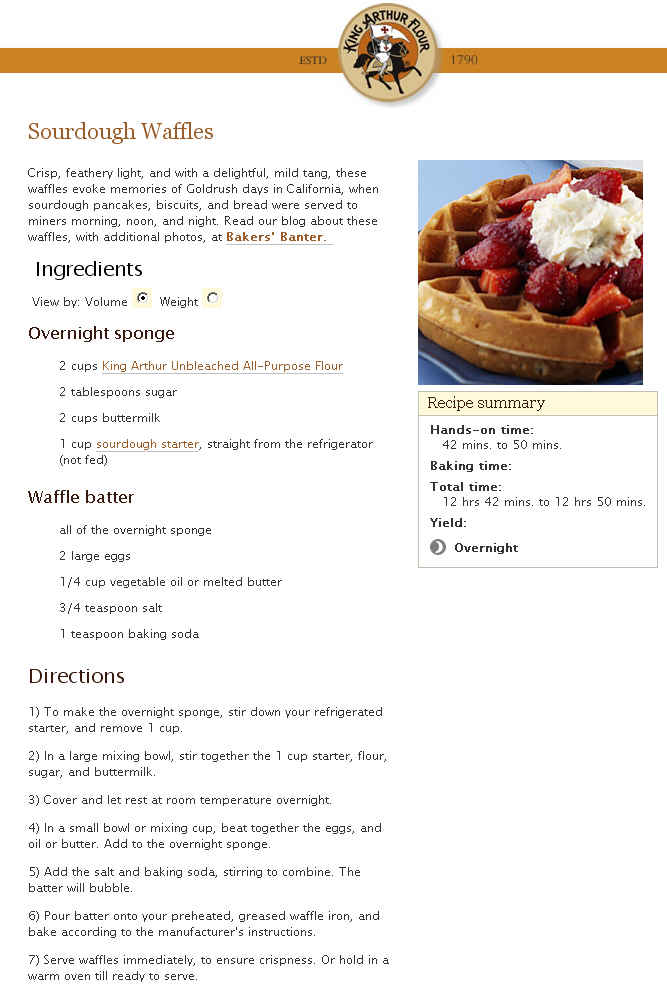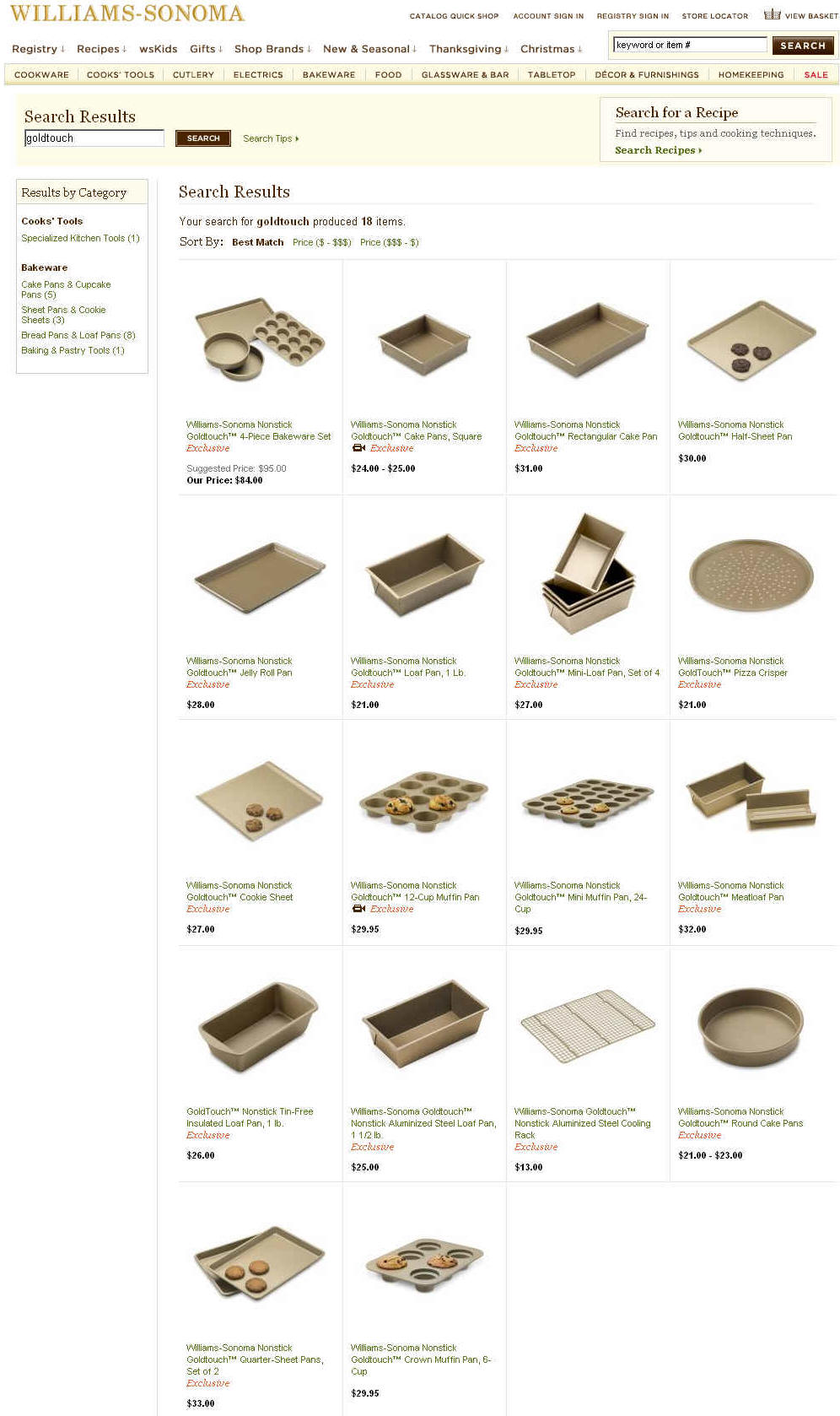|
|
This came from their web pages with details on
your starter.
(Scroll down to see the
pages included with the original, including a few recipes)

These pages came with the
starter
.jpg)
.jpg)





Bread Dough: All
dough can be refrigerated. Chilling dough slows the
activity of the yeast, but it does not stop it
completely. For this reason, it is necessary to
punch the dough down one or two hours after it has
been placed in the refrigerator. Once the dough has
completely cooled, it needs to be punched down only
once every twenty-four hours. Dough will last
approximately three days in the refrigerator;
however, it is best to use it within forty-eight
hours.
After the dough is kneaded, place it in a tightly
covered, large mixing bowl or self-sealing plastic
bag before refrigerating. The refrigeration time is
considered the first rise time. To use, remove the
dough from the refrigerator, punch it down, and
allow it to rest before shaping. The final rising
will be longer than indicated in the recipe because
the dough will still be cool. Bake according to the
recipe directions.
Dough may also be refrigerated after it has been
formed into the desired shape. Cover shaped loaves
or rolls tightly and refrigerate up to twenty-four
hours. Remove from the refrigerator, partially
unwrap, and let rise until they pass the ripe test.
Bake according to the recipe directions.
Yeast dough can also be frozen for later shaping and
baking. After the dough has been kneaded, divide it
into the sections needed for the finished product,
for example, one loaf of bread, one pizza, one pan
of rolls. Flatten each section into a 1-inch thick
disk. Place in self-sealing plastic bags and freeze.
Dough can be kept in the freezer up to four weeks.
For an even thaw, place it in the refrigerator
overnight. Partially unwrap and place it on the
counter for fifteen to twenty minutes to bring it to
room temperature. Punch down the dough. Proceed with
shaping and the second rising. Dough may also be
moved directly from the freezer to the counter for a
shorter thawing time. However, the edges will thaw
faster than the center, so the dough will have to be
worked some as it thaws.
Dough can also be frozen after being formed into the
desired shape, before the second rising. Place
shaped dough on a cookie sheet and place it in the
freezer one hour to harden. Remove from freezer and
wrap in plastic wrap or foil. Place in a
self-sealing plastic bag and return it to the
freezer. Dough can be kept frozen up to four weeks.
To thaw, unwrap the dough and place it on a lightly
greased cookie sheet. Lightly oil the top of the
shaped dough and cover tightly with a piece of
plastic wrap or foil. Thaw overnight in the
refrigerator. Remove from refrigerator, partially
unwrap, and bring to room temperature. Let the dough
rise until it passes the ripe test. Bake according
to the recipe directions.
Ripe Test: Many
factors, including the recipe, room temperature, and
humidity, will determine how long it takes for the
dough to rise. The best way to decide whether it has
risen sufficiently and is ready to be punched down
and shaped is to perform a ripe test. Gently stick
two fingers in the risen dough up to the second
knuckle and take them out. If the indentations
remain, the dough is ripe and ready for punch down.
If not, cover and let rise longer.
Baked Breads: Storing
baked breads in the refrigerator dries them out. To
retain the freshness of crusty loaves of bread,
store them unwrapped at room temperature. Once
sliced, place in a paper bag. Soft-crusted loaves
can be placed in a plastic bag. Homemade bread
contains no preservatives; it usually stays fresh
for a short period of time. When bread has lost its
freshness, remember, there are croutons, bread
crumbs, bread puddings, or your dog. Dogs love hard
bread.
Baked, completely cooled bread can also be
successfully frozen. Wrap first in plastic wrap or
foil, then place in a self-sealing plastic bag.
Freeze for six to eight weeks. Let thaw at room
temperature, partially unwrapped to allow moisture
to escape. Slicing bread before freezing will make
it possible to take out a partial loaf at a time and
will shorten the thawing time, as the slices can
easily be separated. However, it may not stay as
fresh for an extended period of freezing.
|
|
|


.jpg)
.jpg)





